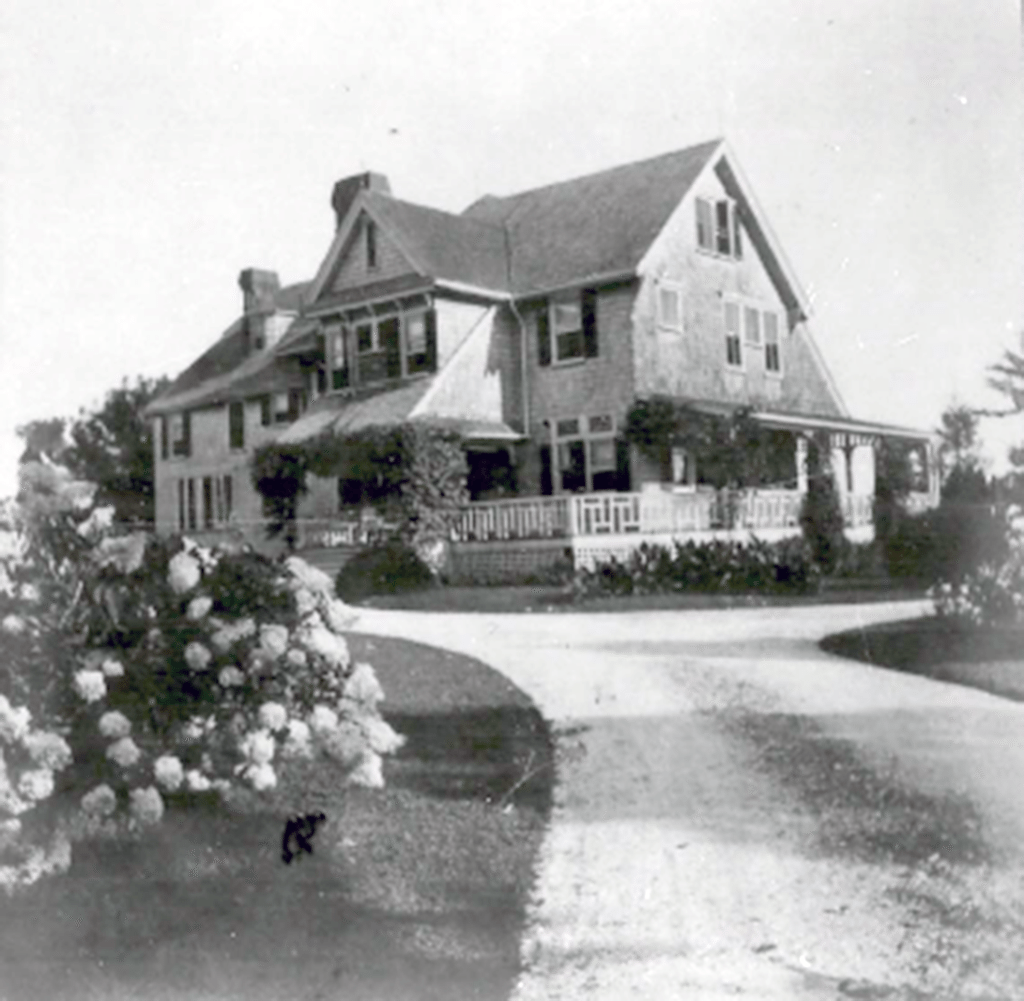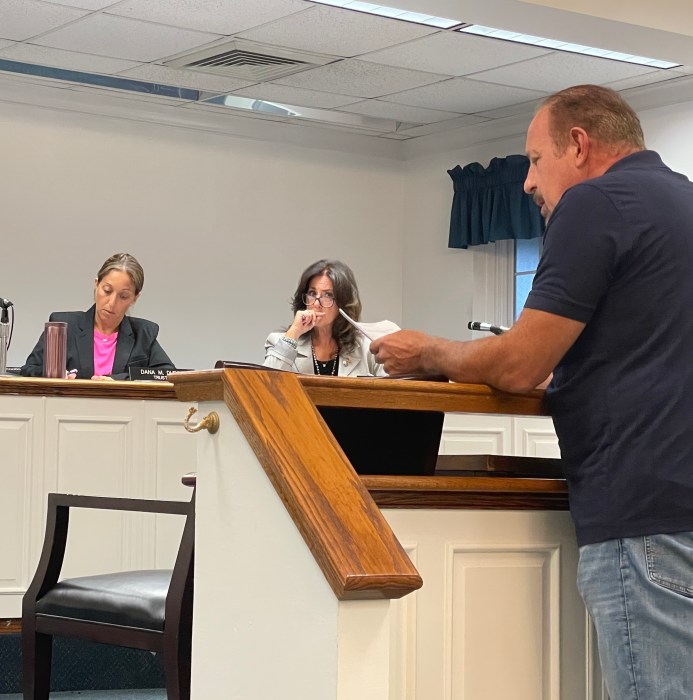
A traveler going east along Merrick Road in the mid-nineteenth century (at that time called South Country Road) would have encountered just a few large houses on the way to Amityville. He/she would have first passed the Red House, on Seaford Avenue, the Van De Water Hotel on Hicksville Road and Massapequa Manor, just to the east of Massapequa Lake. There was a one room schoolhouse east of the Manor and then Old Grace Church, dating from 1844. The only other buildings were mansions built by Jones and Floyd-Jones family members, who had acquired pieces of the land given to Thomas Jones in 1696.
The first was Sedgmoor, near Dover Road today, built in 1854 by Sarah Maria Floyd-Jones, daughter of Brigadier General Thomas Floyd-Jones. She received a portion of her father’s estate because he had died intestate—without a will—and his heirs, three sons and one daughter, were granted equal parts of his holdings. After her father’s death in 1851, Ms. Floyd-Jones married Coleman Williams, who was later instrumental in establishing the Old Grace Church Cemetery and the Floyd-Jones Cemetery behind Old Grace Church. Their property extended from Merrick Road north to the area around the Southern State Parkway and east to Tryon Hall, near Cartwright Boulevard.
Williams donated a portion east of Sedgmoor to Old Grace Church, which, thanks to an 1884 New York State law, was permitted to build a cemetery on its adjacent property. He also laid out the Floyd-Jones Cemetery behind Grace Church Cemetery. The latter extended back to Beaumont Avenue. His son, Coleman Jr., also donated property to build the Floyd-Jones Library in 1896, showing the extent of his and his father’s generosity.

Sedgmoor was a three story wooden structure facing Merrick Road, encircled by an enclosed porch and topped off by a large tower. Little is known about the interior, but a late 1800s photo shows a very somber building, with a walkway in the front, trees on each side and a cleared field in the back. There is an attachment or a separate building to the right of the main entrance. The gentleman in the front of the picture is probably Coleman Williams, Jr., who inherited Sedgmoor upon his father’s death in 1891. He died in 1900 and his wife Edith married John Oddie in 1905. Sedgmoor became known commonly as the Oddie House and remained standing until 1953, making it one of the last of the Jones/Floyd-Jones mansions to withstand the march of progress.
Holland House, built directly across from Sedgmoor, was completed in the late 1880s by Ella Floyd-Jones and her husband William Carpender. The house was relatively modest, with a long driveway leading up from Merrick Road, but it rested on property that stretched down to South Oyster Bay. There is little information about Holland House except that it was sold by the family after Carpender’s death in 1927 and turned into the Wagon Wheel Restaurant, which became very popular for many years. By the early 1950s, the Massapequas were experiencing a population boom and the Roman Catholic Diocese of Rockville Centre was searching for a place to build a church. The Diocese purchased the restaurant in 1952 and used it for Mass and as a rectory while St. Rose of Lima Church was built to the west. Upon its completion in 1965, the Wagon Wheel was torn down and is now the site of St. Rose’s parking lot.
Holland House had a servant’s cottage behind it and to the left. That structure was purchased by the Collamore family when the Wagon Wheel was opened and still stands today. It closely resembles the Floyd-Jones Servants’ Cottage, which stands in Massapequa’s Historic Complex.
Sedgmoor and Holland House are two more examples of the Jones and Floyd-Jones family members’ dominance of this area in the 1800s.
George Kirchmann is a trustee of the Historical Society of the Massapequas. His email address is gvkirch@optonline.net.


































